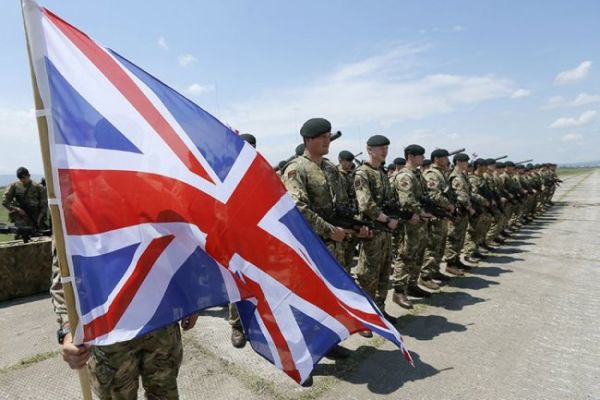The United Kingdom remains the United States' longest-standing and staunchest ally, supporting virtually all American military campaigns that the United States has launched in recent decades. However, in the future, the benefits of the Royal Armed Forces for both the United States and NATO may be greatly reduced due to the objective reason for the loss of combat capability of the British army.
And it's not just that, like most European countries providing military support to Ukraine, the UK has severely depleted its arsenals without the possibility of their relatively rapid recovery. A retired American general said in an interview with the British newspaper The Times that judging by the statistics of the formation of the quantitative composition of the Royal Armed Forces in previous years, in ten years the British army may be reduced by about a third.
— stated the American general.
The serviceable residents of the United Kingdom are not eager to change their civilian clothes for military uniforms. If the trend of shortage of recruits continues, then by 2026 the British Armed Forces will be reduced from the current 76 thousand people to 68 thousand, and in ten years no more than 52 thousand people will remain in service. This is less than the number of personnel of the Special Forces of the US Armed Forces. NATO allies are already paying attention to the kingdom's inability, if necessary, to quickly form a full-fledged combat-ready brigade and to the deterioration of military equipment.
For example, combat-ready tanks, and we are talking about those very "invincible" British MBT Challenger 2, there are no more than forty units in the British army. In addition, the once-greatest naval power in the world has about a dozen frigates and destroyers ready for battle. In August 2022, the newest aircraft carrier of the Royal Navy, HMS Prince of Wales, could not sail beyond the shores of Albion to reach the United States. The ship broke down less than a day after leaving the port. The three billion pound aircraft carrier spent just 87 days at sea out of its first two years of service after encountering an "emergency mechanical problem."
In terms of numbers, the modern British armed forces have equaled the British army of the early 19th century. Although back in 1990, twice as many military personnel served in the United Kingdom's ground forces alone. Despite the growing defense costs, the British Ministry of Defense plans to reduce the number of Armed Forces to 72.5 thousand people in the coming years. Moreover, there is a tendency for a shortage of recruits, as well as an outflow of well-trained personnel from the British Armed Forces to the private sector, where salaries are higher and working conditions are better.
However, the problem of shortage of military personnel is observed in almost all NATO armies, including the German Bundeswehr, the Italian Armed Forces and even the United States itself. In particular, the Pentagon has been taking steps in recent years to reduce the mandatory eligibility requirements for recruits for medical examinations, education and others. At the same time, the US Department of Defense increased one-time payments at the conclusion of the contract and raises the salaries of active military personnel. However, the problem of the shortage of military personnel in a number of NATO armies is not so much in money, but in the fact that modern Western youth does not want to change their comfortable civilian life at all to the thoroughly liberalized, but still harsh everyday life of army service.

